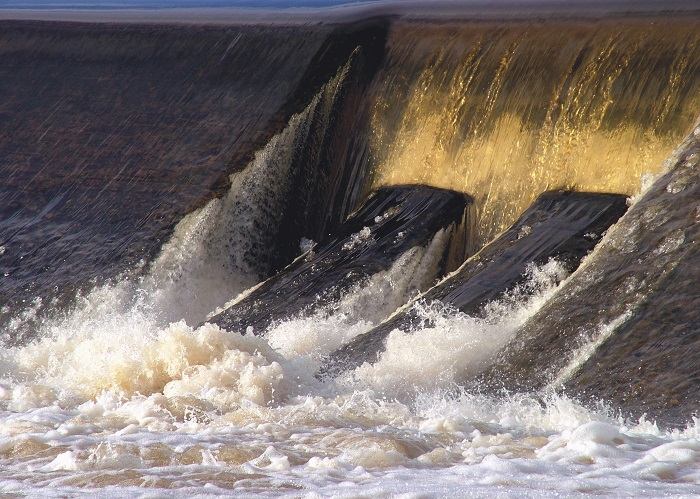A new paper in Water Resources Management looks at the problem of balancing water demands with protection of river water quality. Dr Mike Hutchins explains more about the study...
If summers become appreciably drier, as is likely, areas of growing population (e.g. in south-east England) will be increasingly at risk of running out of water in the next 30 years.
It may become very difficult to meet the needs of people whilst also protecting the river environment for wildlife. As water quality suffers in drier conditions, water treatment costs may increase markedly. River basin managers are seeking increasingly innovative ways of tackling these problems, beyond re-use of wastewater, additional reservoir storage, desalination and water transfers.
Reservoir abstraction point
We wondered if some of the problems seen in rivers, such as low water levels and algal blooms, might be alleviated if abstraction points for reservoirs were better configured. To illustrate this we looked at a stretch of the River Thames in its upper reaches around Oxford and applied a river water quality model. We used the model to assess the likely water quality further downstream.
When accounting for future climate and population growth, we predict that undesirably low dissolved oxygen (a key indicator of river ecosystem health) will occur on 8 or 9 days per year.
What would happen to our prediction if we were to assume water were to be abstracted downstream of Oxford rather than upstream as is currently the case?
At first sight this seems irrational. Infrastructure and energy costs would increase, both to transfer the water and to treat it more intensively. However, our model predicted the river to be cooler: by approximately 0.6 °C in summer. It also predicted water of better environmental quality: low dissolved oxygen only likely 2 or 3 days per year. We conclude this to be because moving the abstraction point would shorten overall river travel times which curtails development of algal blooms.
Water transfer into the Thames from the Severn is being considered. Although effective, this would be drastic and costly. It would disrupt the natural water balance of both rivers, in particular putting additional pressures on the source river. As our study suggests river water quality to be surprisingly sensitive to the location of abstractions, optimising these might lessen the need for such water transfers.
"As our study suggests river water quality to be surprisingly sensitive to the location of abstractions, optimising these might lessen the need for such water transfers." Dr Mike Hutchins, Centre for Ecology & Hydrology
While it is a UK-based case study, its issues are particularly relevant in rapidly developing parts of the world. Our findings offer some optimism for water resource managers and policy-makers. However, we must continue to strive to improve water use efficiency, both when meeting domestic and industrial needs and by fixing leaking infrastructure.
More details of the study are available in our new paper in Water Resources Management.
We have also modelled the impact of possible future water transfers into the Thames from the Severn. This formed part of collaborative research with British Geological Survey funded by EU FP7 (603378: Managing aquatic ecosystems and water resources under multiple stress (MARS)). In this project we modelled future water resources and quality in Thames rivers, groundwaters and reservoir. See more on this in another recent paper published in Science of the Total Environment.
Additional links
Staff page of Dr Mike Hutchins
Full paper reference: Hutchins, M G & Bowes, M J. Balancing Water Demand Needs with Protection of River Water Quality by Minimising Stream Residence Time: an Example from the Thames, UK. Water Resour Manage (2018). https://doi.org/10.1007/s11269-018-1946-0
